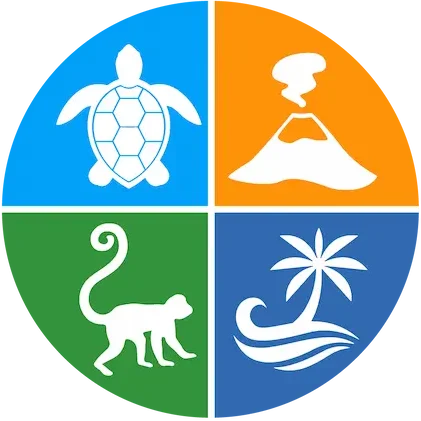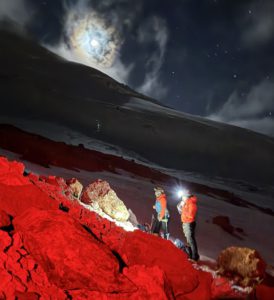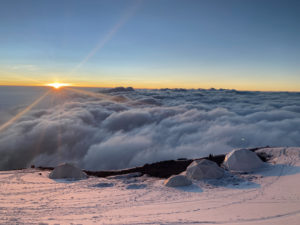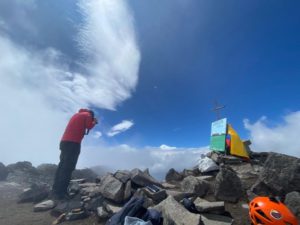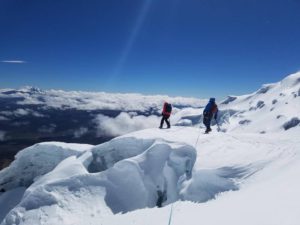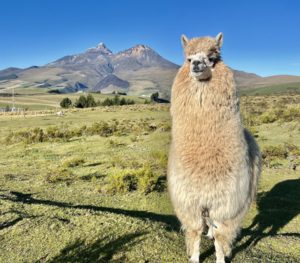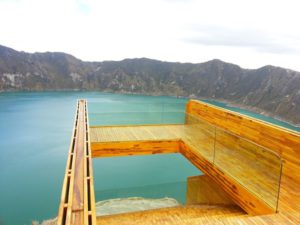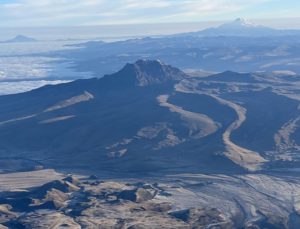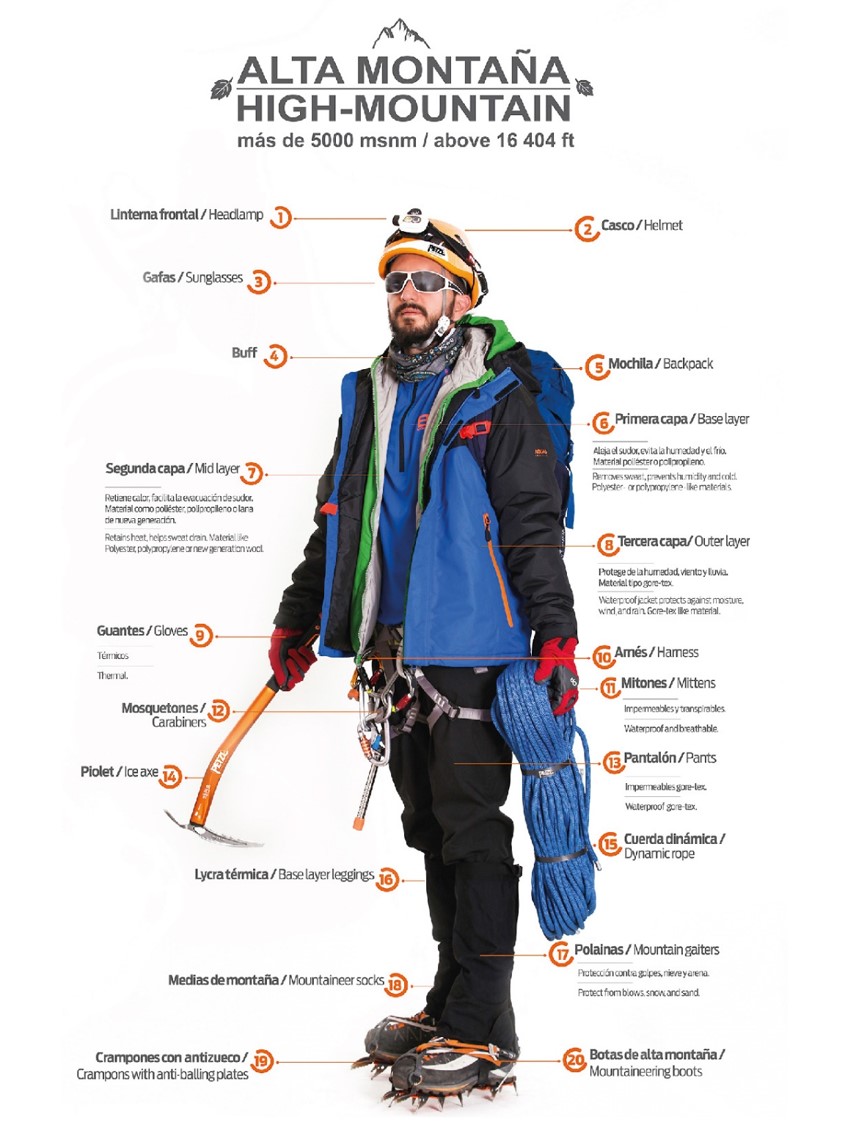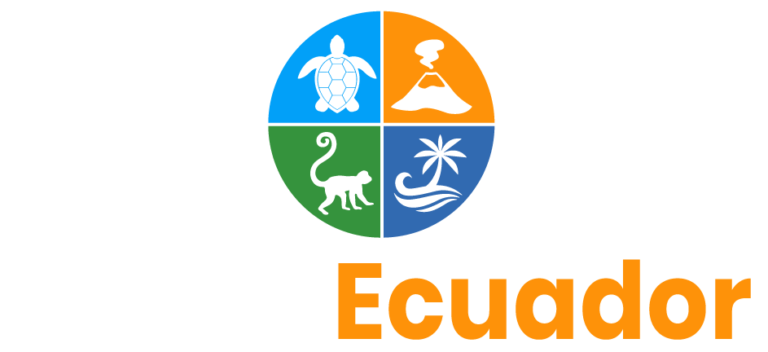OVERVIEW
This 16-day mountaineering school in Ecuador is a complete expedition program that combines cultural immersion, progressive acclimatization, technical glacier training, and summit ascents of the country’s most iconic volcanoes. Participants climb Iliniza Norte (5,126 m / 16,818 ft), Cayambe (5,790 m / 18,996 ft), and Chimborazo (6,268 m / 20,564 ft), while enjoying Quito’s colonial heritage, Quilotoa Lagoon, Papallacta Hot Springs, and Cotopaxi National Park. Designed for gradual adaptation to altitude, this itinerary ensures safety, cultural richness, and the best chance of summit success under the guidance of ASEGUIM & IFMGA-certified mountain guides.
DETAILED ITINERARY
Arrival to Quito
Arrival at Mariscal Sucre International Airport where your guide welcomes you. Private transfer to hotel. Evening briefing and equipment check.
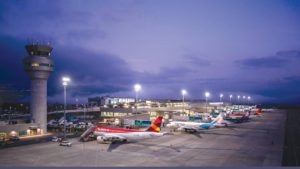
Max Altitude
(2,850 meters / 9,350 feet)
Accomodation
Comfortable hotel in Quito
Meals
---
Distance
-
Duration
Arrival and acclimatization day
Quito City Tour
Guided exploration of Quito’s UNESCO Old Town: Plaza Grande, La Compañía church, and San Francisco Monastery. Afternoon visit to the Equator Line (Mitad del Mundo). Perfect for gentle acclimatization.
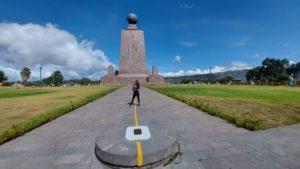
Max Altitude
(2,850 meters / 9,350 feet)
Accomodation
Hotel in Quito
Meals
(Breakfast/-/-)
Distance
---
Duration
----
Transfer to El Chaupi
Drive along the Avenue of Volcanoes to El Chaupi, a small Andean town surrounded by peaks. Stay at Chuquiragua Lodge, your comfortable base for acclimatization and upcoming climbs. Evening expedition briefing.
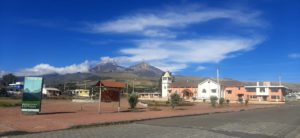
Max Altitude
(3,300 meters / 10,827 feet)
Accomodation
Chuquiragua Lodge
Meals
(Breakfast/-/Dinner)
Distance
---
Duration
---
Acclimatization Hike: Corazón Volcano
Ascent of Corazón (4,790 m / 15,715 ft), a moderate non-technical climb that offers excellent acclimatization and views of Cotopaxi, Ilinizas, and Rumiñahui. Return to lodge.
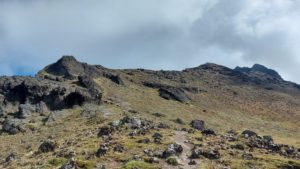
Max Altitude
(4,790 meters / 15,715 feet)
Accomodation
Chuquiragua Lodge
Meals
(Breakfast, Box Lunch, Dinner)
Distance
12 km
Duration
6–7 hrs
Trek to Nuevos Horizontes Refuge
Trek into Los Ilinizas Reserve, climbing through páramo vegetation to the Nuevos Horizontes Refuge (4,700 m / 15,419 ft). Rustic overnight stay at altitude.
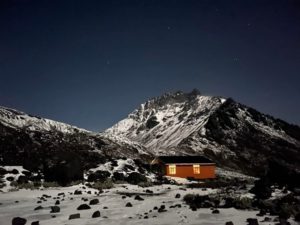
Max Altitude
(4,700 meters / 15,419 feet)
Accomodation
Nuevos Horizontes Refuge
Meals
(Breakfast/-/Dinner)
Distance
5 km
Duration
3–4 hrs
Summit Iliniza Norte
Alpine start for the ascent of Iliniza Norte (5,126 m / 16,818 ft). The route includes scrambling and ridge walking with fantastic views of Cotopaxi and Chimborazo. Descend and transfer back to El Chaupi.
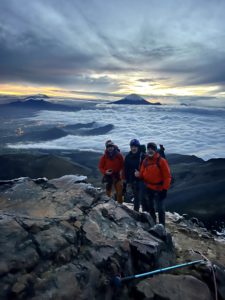
Max Altitude
(5,126 meters/ 16,818 feet)
Accomodation
Chuquiragua Lodge
Meals
(Breakfast/Box Lunch/Dinner)
Distance
8 km
Duration
7–8 hrs
Quilotoa Lagoon & Return to El Chaupi
Scenic drive to Quilotoa Crater Lake (3,914 m / 12,841 ft), one of Ecuador’s most spectacular volcanic lakes. Gentle rim hike and cultural encounters with local communities. Return in the afternoon to El Chaupi for overnight.
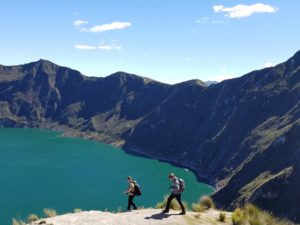
Max Altitude
(3,914 meters / 12,841 feet)
Accomodation
Chuquiragua Lodge
Meals
(Breakfast/Box Lunch/Dinner)
Distance
---
Duration
---
Transfer to Cayambe Refuge
Drive north to Cayambe National Park. If road conditions allow, transfer by car up to Ruales Oleas Refuge (4,600 m / 15,092 ft); otherwise hike in. Guides provide technical briefing for glacier school.
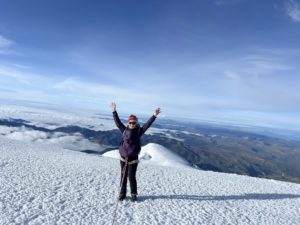
Max Altitude
(4,600 meters / 15,092 feet)
Accomodation
Ruales Oleas Refuge
Meals
(Breakfast/-/ Dinner)
Distance
---
Duration
---
Glacier School on Cayambe
Full day of mountaineering training: use of crampons, ice axe, roped glacier travel, crevasse rescue. Hands-on learning on the glacier.
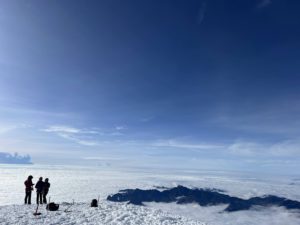
Max Altitude
(4,800 meters/ 15,748 feet)
Accomodation
Ruales Oleas Refuge
Meals
(Breakfast, Box Lunch, Dinner)
Distance
---
Duration
---
Summit Cayambe & Transfer to Papallacta
Summit attempt of Cayambe (5,790 m / 18,996 ft) with glacier ascent under starlit skies. Rewarding sunrise views at the summit. After descent, transfer directly to Papallacta Hot Springs for recovery
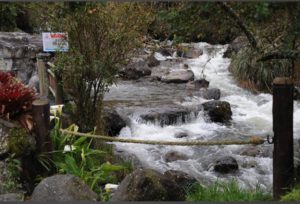
Max Altitude
(5,790 meters / 18,996 feet)
Accomodation
Hotel in Quito
Meals
(Breakfast/Box Lunch/-)
Distance
12–14 km
Duration
10–12 hrs
Papallacta Hot Springs
Full recovery day in Papallacta (3,300 m / 10,827 ft). Soak in natural hot springs surrounded by páramo landscapes. Optional short hikes in the ecological reserve.
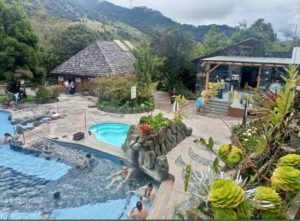
Max Altitude
(3,300 meters / 10,827 feet)
Accomodation
Hotel in Papallacta
Meals
(Breakfast/-/-)
Distance
---
Duration
---
Cotopaxi National Park
Travel to Cotopaxi National Park. Enjoy easy acclimatization hikes, wildlife observation (wild horses, llamas). Overnight at Tambopaxi Lodge (3,700 m / 12,139 ft) with Cotopaxi’s glacier cone as backdrop.
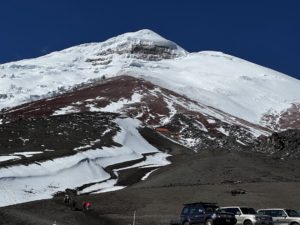
Max Altitude
(3,700 meters / 12,139 feet)
Accomodation
Tambopaxi Lodge
Meals
(Breakfast/-/Dinner)
Distance
---
Duration
---
Chimborazo High Camp
Drive south to Chimborazo Reserve. Short trek of 2–3 hrs to High Camp (5,300 m / 17,388 ft). Early dinner and rest before summit night.
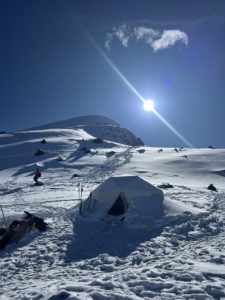
Max Altitude
(5,300 meters / 17,388 feet)
Accomodation
Chimborazo High Camp
Meals
(Breakfast/-/Dinner)
Distance
---
Duration
---
Summit Chimborazo
Summit attempt of Chimborazo (6,268 m / 20,564 ft), Ecuador’s highest mountain and closest point to the sun. Technical glacier climb with unforgettable sunrise. Descend and transfer to Riobamba or Quito.
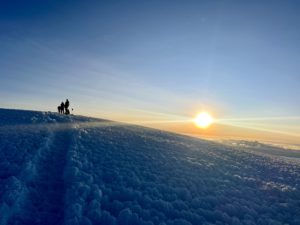
Max Altitude
(6,268 meters / 20,564 feet)
Accomodation
Hotel in Riobamba / Quito
Meals
(Breakfast/Box Lunch/-)
Distance
10–12 km
Duration
10–12 hrs
Extra Day for Weather Conditions
Reserved as a buffer for summit attempts. If weather prevents climbing, stay at Chimborazo High Camp (5,300 m / 17,388 ft) or Hermanos Carrel Refuge (4,800 m / 15,748 ft) to wait for improved conditions.
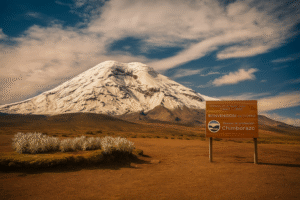
Max Altitude
(5,300 meters / 17,388 feet) High Camp or (4,800 meters / 15,748 feet) Refuge
Accomodation
High Camp / Refuge
Meals
(Breakfast/Lunch/Dinner)
Distance
---
Duration
---
Return Home
Private transfer to Quito International Airport for departure. End of services.
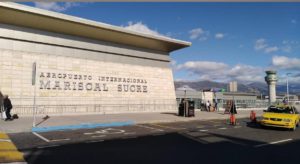
Max Altitude
---
Accomodation
---
Meals
(Breakfast/-/-)
Distance
---
Duration
---
SERVICES
Include
-
Professional IFMGA / ASEGUIM-certified mountain guide
-
Private ground transportation
-
Hotels, lodges, haciendas & refuges
-
Meals as listed in itinerary
-
National park entry fees & climbing permits
-
Group technical climbing equipment
Not include
-
International flights
-
Personal climbing gear (available for rent)
-
Travel & medical insurance (mandatory)
-
Extra meals & drinks in cities
-
Tips and personal expenses
IMPORTANT DETAILS
In Ecuador you can Climb all year, but these are the seasons
High Season: June to August / December to January
Low season: February to May / September to November
Ecuador is a fantastic destination that offers plenty of options for travel lovers. In addition to the Andes, Galápagos and Amazon Jungle are also part of this amazing land.
About this tour
Difficulty: Demanding
Places: 
Trip-code: Number 
Duration: 16 days
Participants: Minimum: 2 Maximum: 12
Mountain Guide: Fernando Iza
Other dates / additional info: Contact us!
Legend Booking-information
EZZ – Single room supplement
- On this trip, places are still available.
- On this trip, only a few places left.
- This trip is sold out / closed.
MAPS
EQUIPMENT
- Head torch
- Helmet
- Sun Glasses
- Buff/ Warm cap
- Backpack
- First layer
- Second layer
- Third layers (Waterproof Windbreaks, Waterproof pants)
- Mittens/Gloves
- Harness
- Inside gloves
- Carabiners
- Thermal pants
- Ice ax
- Dynamic Rope
- Thermal Lycra
- Gaiters
- Socks Mountain
- Crampons
- Mountaineering boots
- Sleeping Bag
- Battery Groups AAA
- Sunscreen
- Trekking Poles
- Thermo / Canteen for Water
- Energy bars
FAQ
1. What volcanoes will I climb in the 16-day expedition?
You will climb Iliniza Norte (5,126 m / 16,818 ft), Cayambe (5,790 m / 18,996 ft) and Chimborazo (6,310 m / 20,702 ft), three of Ecuador’s most iconic volcanoes.
2. Do I need mountaineering experience for this program?
No prior experience is required. The 16-day climbing school includes glacier training, acclimatization hikes, and guided practice climbs with IFMGA/ASEGUIM certified guides.
3. What is included in the expedition package?
The program includes professional guides, transportation, accommodation, meals, glacier training, cultural activities, and visits to hot springs. Personal gear rental is also available.
4. What is the best season to join the Ecuador Volcano Expeditions?
The best climbing seasons in Ecuador are June–August and November–February, when weather conditions are most favorable for summits.
5. How difficult are the climbs on this 16-day expedition?
Difficulty is progressive. The program starts with acclimatization hikes and easier peaks, building up to higher technical climbs like Cayambe and Chimborazo.
6. Why choose IFMGA/ASEGUIM guides for this expedition?
Certified IFMGA/ASEGUIM guides provide the highest safety standards, technical expertise, and local knowledge to ensure a successful and safe climbing experience in Ecuador.
